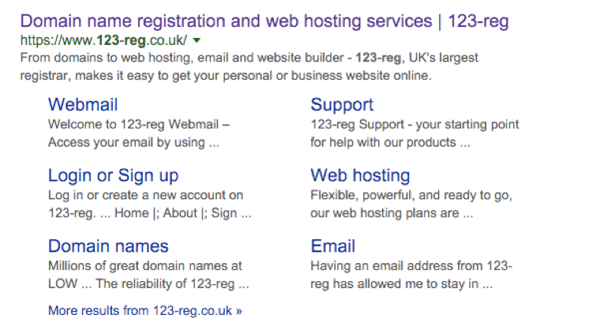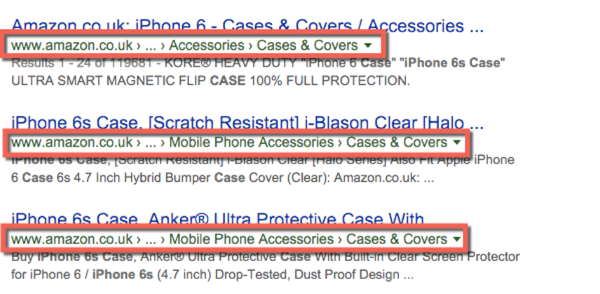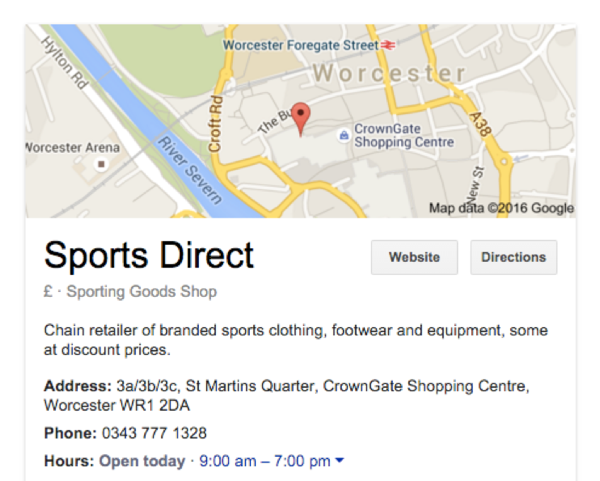How to make your organic listing stand out in the SERPs
Getting listed on the first page of Google is an incredible accomplishment. But if you’re relying on Google to figure out what to share in their search engine results pages (SERPs) snippet, you’re missing out on a fantastic opportunity to attract more traffic to your site.
Here’s the thing: while getting your site onto the first page of Google is doable for any serious business, if it doesn’t stand out from the rest you won’t get the results or the amount of traffic you’re after. So you should not only work to get to the top spot on Google but also to catch users’ attention with your SERP listing. That’s because your top spot on Google won’t mean a thing if users aren’t enticed to click through to your site.
In this post we’ll take a look at some things you can do to liven up your SERPs listings and make them stand out so they get more attention than the rest. While they’re not 100% foolproof strategies that guarantee users will click on your listing over another, they’re all worth putting into practice if you want to increase your click-through rates.
Sitelinks and sitelinks search box
Sitelinks are the links underneath your root domain listing. These are basically an expansion of your site based on clean navigation and a simple site structure. They are organised into two columns with six sub-results, as you can see in the example below:
Since the sitelinks display a breakdown of the internal pages on your sites, which could include your home page or some of your other high traffic pages, they can be a great way to encourage users to click through and explore your entire site.
According to Google, sitelinks are automated and will only be displayed if Google thinks they are useful to search users. In other words, you have (almost) no control over which links Google shows in your SERPs. The only ability you have now is demoting links (which we’ll discuss later in this post).
However, there are a couple of ways to make Google notice your site so it can assign sitelinks to your SERPs listings. Here are a few things you can do to influence your chances of getting sitelinks:
Use a clear-cut navigation. Sitelinks are meant to make it easier for users to navigate a website and go to the pages they’re interested in quicker. So when (re)designing your site, make sure to create a clear navigation that emphasises the most important sections of your site.
Create a sitemap and submit it to the Google Search Console (previously Google Webmaster Tools). Sitemaps aren’t just about helping Google index your content but also about listing and defining the most important pages on your site. So by creating an XML sitemap you can enforce Google to index your important pages as sitelinks. Check out this Google tutorial to learn how to create and submit a sitemap to Google Search Console.
Improve internal linking. Internal links drive value from one page to another. Also, Google believes that the most important pages on a site will have the highest number of internal links. Since Google shows the most important pages on a site as sitelinks, it means you should be doing more internal linking to tell Google which are your most important and relevant pages that should be indexed as sitelinks.
Raise brand awareness. Asked how sitelinks are generated, Google’s Matt Cutts answered in a video with a great tip, saying: “Make sure that enough people know about your website. You want to be a reputable website and you want people to find out about your website because we don’t do it for every single query.” So make sure to spend more time on spreading the word about your brand to make it reputable.
Remove broken links. This is always a helpful tactic for a variety of reasons, but this can help Google consider your site. Read our beginner’s guide to link reclamation to learn how to fix broken links.
Attract backlinks with relevant anchor text. Backlinks are the backbone of search, so make sure to drive external links to your hero pages. These are the pages that you want to show up as sitelinks.
While these things can help influence your chances of getting sitelinks, the truth is the only thing you can actually manage when it comes to sitelinks is which pages on your site shouldn’t appear in the Google SERPs. If you have pages that you don’t want Google to list in a sitelinks listing, you can simply demote them. You can do that by logging into your Google Search Console account and navigate to the “sitelinks” section found under the “Configuration” menu. There, you can list any pages on your domain that should not be included in this feature.
For more information, we also recommend reading this post on Moz on what you need to know about Google’s sitelinks search box.
Leverage rich snippets
Rich snippets can help users determine whether a site or web page is relevant to their search, and may result in more clicks to your site. They basically give users extra information about what they can find on a specific page, in addition to the standard text descriptions.
For example, the snippet for a restaurant can show their average star rating and price range, the snippet for a recipe can show a photo, the total preparation time and its rating and the snippet for a band could list its latest album along with a link to play each song on the album.
Here are some examples:
Recipes (search query: “banana pudding”)
Business location (search query: “fitness gym”)
Products (search query: “iphone cases”)
Events (search query: “tomorrowland”)
As you can see from the examples above, the listings jump out because:
- The keyword is highlighted in every result
- The rating jumps out from among the competing listings
- The sitelinks send users to relevant pages
Read our post to learn how to use use rich snippets to boost organic traffic. You can also take a look at the following guides for more tips and advice:
- Promote your content with structured data mark-up
- Make your site stand out in SERPs with rich snippet mark-up
- A visual guide to rich snippets
Write seductive page titles and meta descriptions
A simple page title tweak could take you from driving 1% of consumers to your landing page, to driving 15%! This also goes for your meta descriptions so make sure you take the time to make your page titles and meta descriptions unique, relevant and enticing if you want to stand out from the other listings.
A page’s title can greatly influence whether or not a user clicks on your page in the SERPs, and it has the power to make or break your organic click through rate. Here are some things you keep in mind when crafting your page titles:
- The title should include your target keyword close to the front of the tag, which is great for grabbing the user’s attention
- The title should be relevant to the page it’s sending visitors to
- The title should evoke emotion and create curiosity
Meta descriptions should also be approached from a sales perspective. Since this is the first message that users get from you in search, make sure to use it to communicate that you hold the solution to their problem. Only you!
Here are some tips to make great meta descriptions that stand out in Google’s results:
- Use every one of those 150 characters maximum if you can to sell your business and your offering
- Include a compelling call to action to entice people to click through
- Include keywords or words that users would use to search for your product because these will be highlighted, bringing even more attention to your listing
For more tips and advice, make sure to read our beginner’s guide to writing title tags and meta descriptions that get clicks.
Create search engine friendly URLs
The format of an URL can also influence what is displayed in the SERPs, and in turn, affect click-through rates. So make sure to use search engine friendly file names and permalink structures to make your listing more relevant.
For example ?pageid=246 says nothing about what the user can find on that page and won’t help your rankings either. However /iphone-cases/ tells users exactly what they can expect to find on that page.
With the introduction of rich snippet markup, webmasters can adjust their URL snippets to be cleaner and clear, while providing content to queries in the SERPs. For instance, the pages in the Amazon examples below use semantic markup for breadcrumb navigation. As a result, the URLs provide clear information about the products on those pages:
So when developing your URLs, pay closer attention to the structure, keywords and breadcrumb navigation snippets. In addition:
- Make sure your site is well-organised in its structure and hierarchy
- Be sure to mark up your pages with breadcrumb information for search engines.
Read step 4 in our post for more tips on how to create a SEO-friendly URL structure.
Optimise for local
Optimising your site for local search can be extremely beneficial for you, no matter the size of your business. You can use the Moz Local tool to review the information shared about your business and edit it to make it accurate.
You should also claim your business listings and fill out your profiles completely as that also helps Google understand more about your business and can also help with your rankings. This can also increase your chances of having the map listing shown in the search results, like in this example:
Read our posts to learn more about how to earn local links and get your business at the top of the local rankings:
- Local SEO for local businesses – a beginner’s guide
- Six simple ways for small businesses to build good local links
- How to optimise your site for Google’s new local pack change
Personalised annotations
Google wants to make recommendations easier to discover by users searching for useful information about a particular business or product. It’s a known fact that people trust their friends’ recommendations, which is why personalised annotations display who has already +1’d a webpage or blog post.
To increase the chances of these annotations showing up in search results, make sure to first create a Google+ page for your business, then add a +1 button and a Google+ badge on your page.
Wrapping up
While focusing your efforts on getting your site at the top of Google’s SERPs, don’t forget about the importance of having a Google listing that highlights you against the competition.
Surely, more new and exciting search engine tactics will emerge in 2016. And while we encourage you to explore them, make sure you first cover your SEO basics first. That includes fully optimising your organic listings.
What else are you doing to make your organic listing stand out in the SERPs?







